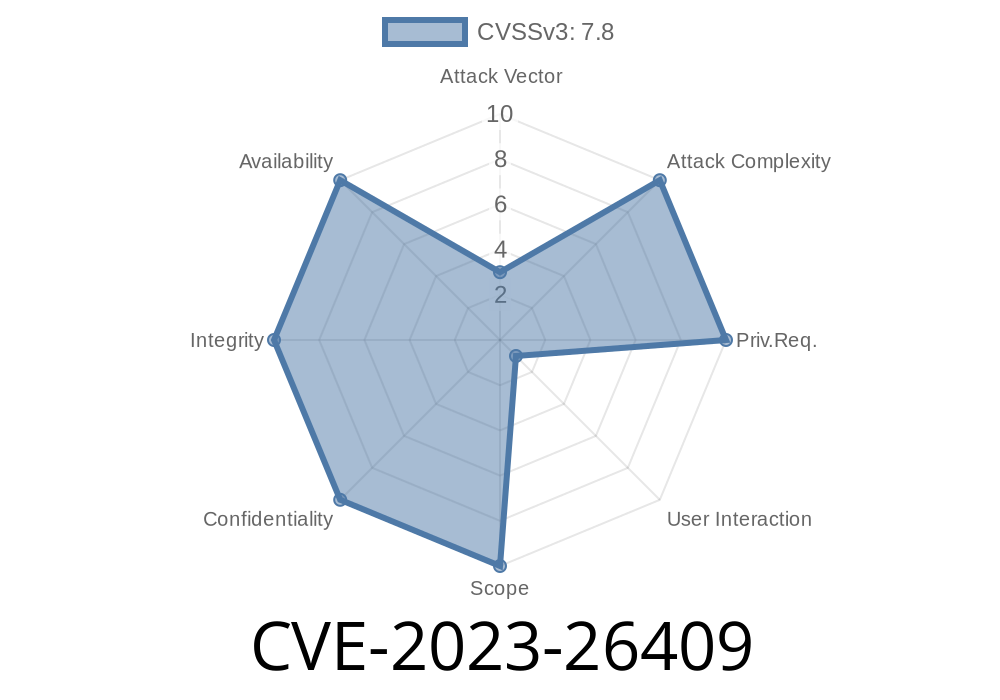In this long read post, we'll dissect CVE-2023-26409, a security vulnerability affecting Adobe Substance 3D Designer version 12.4. and earlier. This out-of-bounds (OOB) read vulnerability can be exploited when parsing a maliciously crafted file, potentially resulting in a read past the end of an allocated memory structure. If successfully exploited, an attacker could execute code within the victim's user context, although this requires the victim to open the malicious file.
Code Snippet
The following is a simplified code snippet to showcase the vulnerability. Note that this is not the exact code from Adobe Substance 3D Designer, but rather a representation to help understand the issue:
void parseFile(char* filename) {
FILE* file = fopen(filename, "rb");
if (file == NULL) {
return;
}
int32_t size;
fread(&size, sizeof(int32_t), 1, file);
unsigned char* buffer = (unsigned char*) malloc(size);
fread(buffer, sizeof(unsigned char), size, file);
for (int32_t i = ; i < size; ++i) {
if (buffer[i] == ) {
memcpy(buffer, &buffer[i + 1], size - i);
break;
}
}
processBuffer(buffer, size);
fclose(file);
}
However, the code has an OOB read due to the following for-loop
for (int32_t i = ; i < size; ++i) {
if (buffer[i] == ) {
memcpy(buffer, &buffer[i + 1], size - i);
break;
}
}
When the byte value is encountered within the buffer, a memcpy operation is executed, copying the data from the next byte position to the end of the buffer. If the value is found at the end of the buffer, an out-of-bounds read would occur.
Exploit Details
An attacker could create a malicious file with a specifically crafted size and buffer to trigger the vulnerability, causing an out-of-bounds read. This specifically crafted file, when loaded into Adobe Substance 3D Designer, could result in the execution of arbitrary code within the context of the current user.
One of the primary challenges for an attacker is to find a way to trigger the OOB condition while still maintaining control over the memory layout and structure of the application. In practice, this might involve manipulating other properties of the crafted file or leveraging existing application functionality to gain an advantage in the exploitation process.
However, it's important to note that successful exploitation of this issue requires user interaction, as the victim must open the attacker's malicious file.
References and Original Resources
CVE-2023-26409 was initially disclosed by Adobe, and the official security advisory can be found here: Adobe Security Bulletin APSB22-12.
Further details, including a more technical analysis of the vulnerability and exploitation techniques, can be found in the following resources:
1. NVD - CVE-2023-26409
2. MITRE CVE Entry - CVE-2023-26409
Conclusion
CVE-2023-26409 highlights the importance of secure coding practices and the need for thorough testing and validation of user-supplied input. Developers should be mindful of out-of-bounds read vulnerabilities and design their code to prevent similar issues.
Adobe has issued a patch for this vulnerability, and Adobe Substance 3D Designer users should update to the latest version as soon as possible to mitigate the risk of exploitation. And as always, users should exercise caution when opening files from unknown or untrusted sources.
Timeline
Published on: 04/13/2023 20:15:00 UTC
Last modified on: 04/14/2023 13:06:00 UTC
